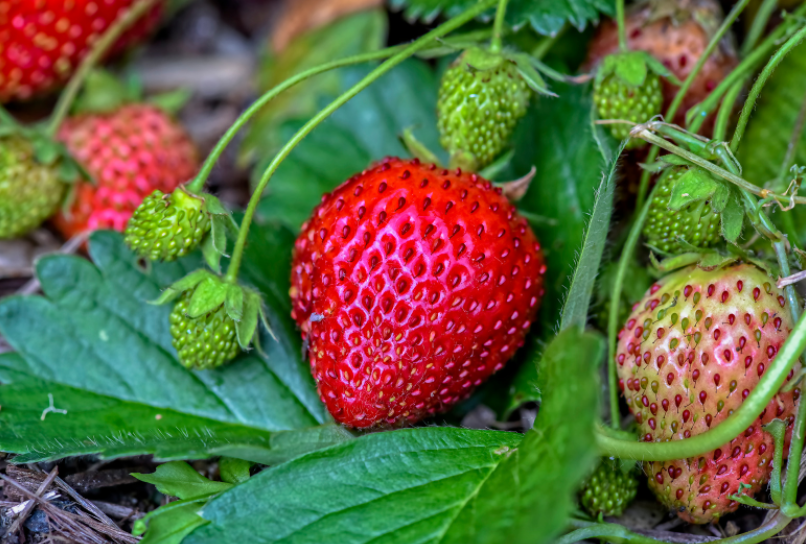Learn How To Grow Strawberries At Home
Strawberries are an excellent summer fruit, perfect for desserts and beverages. But why purchase expensive strawberries when it is so simple to grow your own?
They thrive in the vegetable garden, on the patio, and in hanging baskets, containers, and window boxes.
How To Grow Your Own Strawberries
Strawberries are available as either classical summer cropping varieties (June bearers) or “ever-bearers” (perpetual), which yield less densely but keep going into autumn.
Order a few plants of two varieties of each type for a succession of fruit. Choose a sunny, protected spot in the well-cultivated ground but avoid areas where potatoes or tomatoes have been raised recently.
Incorporate well-rotted farmyard manure or garden compost. Avoid sites that waterlog in winter. Space plants 16in (40cm) apart in rows 36in (90cm) apart.
Trim roots to about 4in (10cm) and spread them in the planting hole.
Plant with the crown just above and here you might opt for white polythene. Fruit in contact with the soil can spoil.
Traditionally, gardeners have placed straw under the fruit to keep it clean but “strawberry mats”‘ are also available.
Control slugs and snails and use anti-bird netting over fruit. After cropping, shear off the old leaves about 4in above the crown and remove runners (young plants that develop as offshoots from the parent) unless you want to propagate more plants.
Strawberries grow well in containers. Use an equal mix of John Innes No. 3 and multipurpose compost.
Grow bags are also a good option, with four plants in each. Water well and feed with a liquid tomato fertilizer from spring onwards.
Watering
When planting in the ground, leave ample space between plants for better yields and easier access, ideally 45 cm.
Using a trowel, excavate a hole that is larger than the root ball and line it with compost.
Then, thoroughly water the plants and continue to water them until autumn.
Growing in Basket
Growing strawberries in hanging baskets is similarly straightforward.
Ensure that the container has ample drainage holes, then line it with old newspaper and moss before adding fresh compost.
Substitute gravel for the newspaper and moss in the containers. Strawbs enjoy a sunny patio or balcony location.
Some garden centers carry strawberry planters that resemble tall pots with large holes along the sides. These are optimal because they maximize the number of plants, resulting in greater yields.
Consistently fertilize and water your strawberry plants throughout the spring and summer for abundant harvests of succulent strawberries. And remove leaves with pests or diseases.
Strawbs will continue to grow year after year, but you should replace them approximately every three years to ensure that you continue to enjoy excellent harvests.
That is how to grow your own strawberries.
Harvesting
strawberries are typically ripe for picking from June to September.
When the fruit is ready to be harvested, simply pinch through the stalk with your finger and thumb to avoid damaging it.
Strawberries should be picked once they are fully red and consumed as soon as possible after picking.
Once your efforts have borne fruit, you can enjoy strawberries in a variety of ways.
With their fresh strawberries, many opt to make jam, while others opt to make desserts such as tarts.
If you own an ice cream maker, consider making strawberry ice cream or doughnuts with strawberry jam.
Or, for a classic British dessert, simply enjoy strawberries on their own or with a splash of cream.
Tip
Save old stockings to use as boot liners. It will prevent spiders from entering your shed or garage.


























